| |
|
||||||||||||
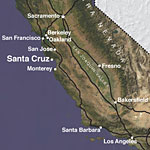 |
| Map of California [enlarge] |
About Santa Cruz
Santa Cruz is a picturesque city of 58,000 people on the Pacific coast, 75 miles south of San Francisco. It may not be paradise, but it's a very attractive place to live compared to many American cities. Nestled on a ten-mile strip of coastal shelf land between the heavily forested Santa Cruz Mountains to the north and the shorelines of Monterey Bay to the south, the city has breathtaking vistas from both its hillsides and beaches.
The city enjoys an invigorating climate with moderate temperatures year round: no snow or freezing weather in the winter, and very few days in the summer with high humidity or temperatures above 85°F. Most of the rain is in late fall, winter and early spring, leaving many months of the year virtually free of precipitation. The wind can be chilly near the ocean, and the fog a bit depressing when it hangs on late into the day for a week or two, but most days are sunny and clear.
A Brief History of Santa Cruz
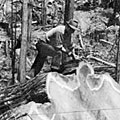 |
| Logger on old-growth redwood tree, early 1900s [enlarge] |
Thanks to a fast-flowing river and the heavily forested mountainsides, Santa Cruz had a number of natural assets that made it possible for real estate owners in the little central business district to attract capitalists and workers to the area. The river currents were ideal for powering lumber and paper mills, which provided a major boost for a timber industry that was profitable first and foremost because of its giant redwood trees, renowned for their beauty, durability, and resistance to decay and insects. An ample supply of madrone and alder trees, which provided a good base for making explosives, brought a manufacturer of blasting powder and gunpowder to an area in the mountains a few miles northeast of the city.
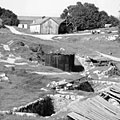 |
| Lime kilns at the Cowell Ranch [enlarge] |
The abundance of bark from tan-oaks — a cheap source of the tannic acid necessary for tanning hides — led to a large tanning industry; by 1870, ten tanneries, making use of hides from the Mission Santa Cruz and the few remaining cattle ranches, supplied half the saddle leather produced in the state. And the limestone in the hills and mountains behind Santa Cruz became valuable because of its role in making plaster and mortar for use in the construction of stone or brick structures, leading to the development of several limestone quarries that by 1880 were supplying more than half of the lime used for construction in the fast-growing cities of San Francisco, Oakland, San Jose, and Sacramento.
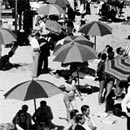 |
| Tourists on the beach in the '20s or '30s [enlarge] |
Because of its beachfront setting, Santa Cruz started to be a tourist destination very shortly after California became a state in 1850, and it has long been known for its laid-back atmosphere and beachfront amusement park and boardwalk, complete with an old-fashioned wooden roller coaster — the Giant Dipper — that dates back to 1924. Santa Cruz is also renowned as a great place to surf or watch surfing contests, earning it a mention in the Beach Boys' 1963 classic "Surfin' USA."
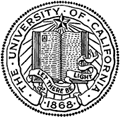
Santa Cruz became a college town in 1965 with the opening of a new campus of the University of California. The local landowners were overjoyed by winning the competition for the new campus; they envisioned huge growth based on new industries that wanted to be near a university. But no new industries arrived. To the landowners' chagrin, the campus became a competing power base, with its faculty, staff, and students providing neighborhoods with the added money, expertise, and leadership necessary to reject or control new real estate developments when they impinged on the quality of local life. The campus became even more of a "Trojan horse" after 1971, when the 26th Amendment granted voting privileges to 18- to 20-year-olds and made an already activist student body into an overwhelmingly progressive voting bloc large enough to swing elections in a pro-neighborhood, pro-environment direction when it could be mobilized.
How UC Santa Cruz Became Unique
 |
Watch this 8-minute talk, presented at the 50-year reunion of UCSC's "Pioneer Class," that tells the story of the origins of UCSC and how it influenced the city of Santa Cruz. |
The 1989 Loma Prieta Earthquake
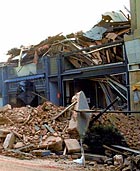 |
| Damage in October 1989 [enlarge] |
Beyond its atypical power structure, there is another reason why Santa Cruz is an interesting test case: eight years after the progressives finally took control of the city council, they faced an unprecedented challenge when the main business district was almost completely destroyed by a large earthquake that struck the area on October 17, 1989, with its epicenter just 10 miles from Santa Cruz. Three people were killed in the downtown area and nearly half of the downtown buildings had to be torn down, with many others suffering damage that required major repairs. Stunned city residents huddled in grief as they saw the entire downtown core being fenced off.
More about the quake
For more photographs of 1989 earthquake damage, see the US Geological Survey's image gallery, which includes a section on the Santa Cruz area.
A short video shows some damage through the lens of a TV news crew from San Francisco.
For maps and scientific papers on the quake, see this USGS page, or visit Wikipedia for a more general overview.
The downtown businesses that didn't go bankrupt or move elsewhere had to move into large tent-like pavilions that were hastily erected on city parking lots just outside the cordoned-off area. In the process, the quake also put power issues on the table once again. It handed the disheartened business leaders what some of them saw as a golden opportunity to regain their political ascendancy by showing how necessary they were to economic prosperity.
For the progressives, the disaster was fraught with political danger: they needed to rebuild the downtown in order to have the tax revenues to continue their ambitious social programs, but they feared and distrusted the downtown land and business owners after almost two decades of bitter political warfare.
After a long political argument between the progressives and the downtown business community (which is discussed in detail in The Leftmost City), the city slowly recovered in the late 1990s and now has a new Pacific Avenue that is almost as vibrant as the old Pacific Garden Mall.
For a more detailed account of the history of Santa Cruz from a sociological perspective, please read the document entitled "The History of Santa Cruz", which leads directly into "Progressive Politics in Santa Cruz".
This document's URL: http://whorulesamerica.net/santacruz/
All content ©2024 G. William Domhoff, unless otherwise noted. Unauthorized reproduction prohibited. Please direct technical questions regarding this Web site to Adam Schneider.
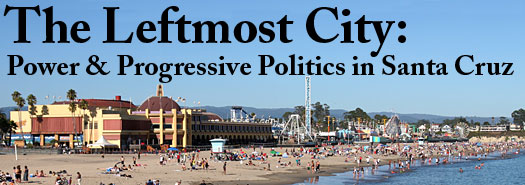
 mobile/printable version of this page
mobile/printable version of this page